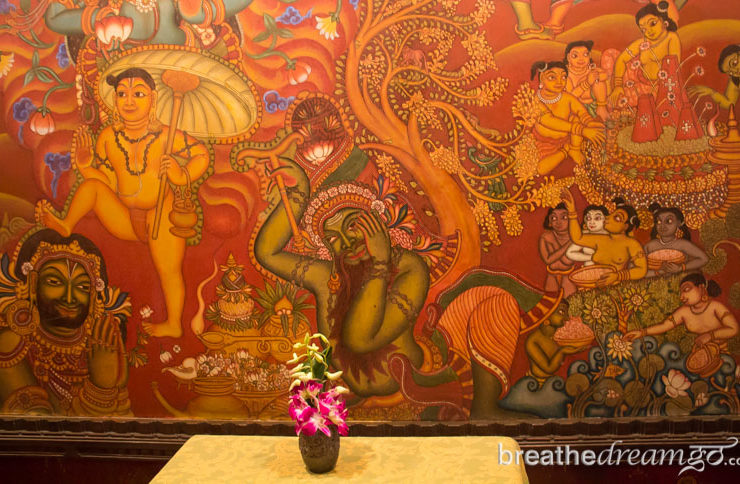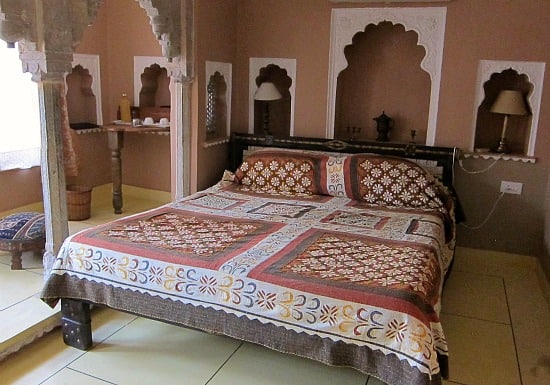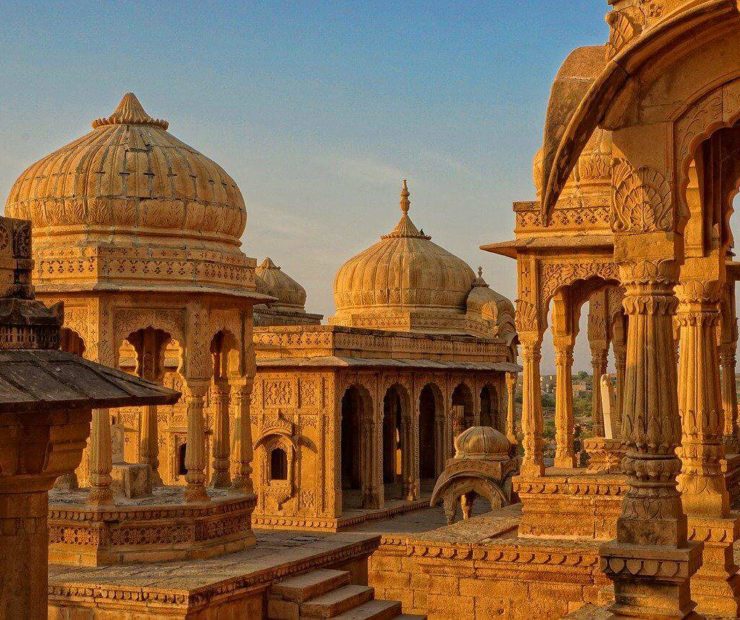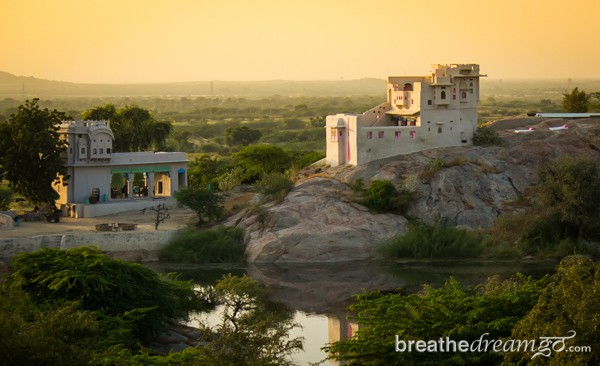
A luxury resort with a sublime soul in Rajasthan, India
DRIVING THROUGH THE scrubby desert of central Rajasthan, we stop to let a herd of goats pass. The goat herder smiles when I step out of the car to take his photo, his deeply lined face topped with a bulbous turban. I’m in rural Rajasthan, driving through the desert, and we’re miles from the nearest town, historic fort or carved haveli. It’s not the kind of place you would expect to find a luxury resort, and that’s the point.

We drive through the gates and onto the Lakshman Sagar property, bumping along a dirt driveway, past a rocky hill, topped with a small Hindu temple and several prancing peacocks, and we’re there.
Two simple white buildings, with maharaja flourishes, stand gracefully on the edge of a small lake, one low and open-sided, the other tall and white, like hats worn to the Royal Ascot. The low one is the mardana, formerly the men’s quarters and now the al fresco dining room. The tall one, adorned with fluttering silk pennants, like ribbons, was the zenana, the women’s quarters. It’s now a warren of private dining rooms, reading nooks and sunset terraces, with bright purple and pink accents set off against the whitewashed walls.
The idea is to preserve and celebrate the local culture in every detail.
Around the lake, at discreet distances, 12 newly built and artfully designed villas in traditional Rajasthani style blend in among the gently rolling hills of the 32-acre property. Each one has it’s own personal plunge pool, carved from stone, and beckoning with cool, turquoise water.
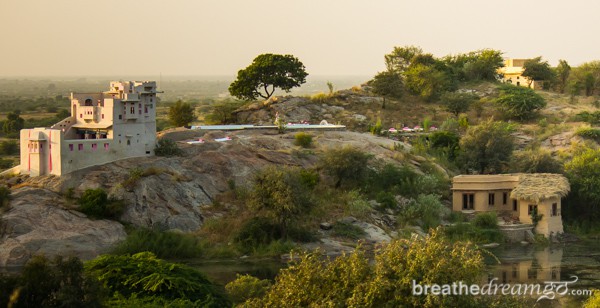
I am met by a handsome man in flowing shirt and jodhpurs, who offers me a cooling drink in the dining room. I see binoculars and walking sticks at the ready, and fall in love with the elegant simplicity of the open-air room. Wood furniture, a polished stone floor, accents in green and turquoise, and chiks (bamboo blinds) rolled up above the arches complete the picture. Built in the 19th century by the Thakur of Raipur as a hunting lodge, Lakshman Sagar has a long tradition of hosting nobility and eminent guests.

My imagination is already engaged. I have left the world behind and arrived in a fantasy. I know almost immediately that Lakshman Sagar is my kind of place. Small, intimate, comfortable and carefully created, it is a work of art that inspires my imagination. At once I am a maharani relaxing in my summer palace, a Raj-era memsahib on holiday and a glamorous voyager from the “golden age” of travel.
Lakshman Sagar seems almost to have sprung, perfectly formed, from the rich culture and golden sands of Rajasthan. Casually luxurious, the natural environment and the man-made work together, in harmony, to create a peaceful and sublime destination resort. But, in fact, the resort took two years to build. “Green” architects Revati and Kamath took great care to build with local materials, inspired by traditional styles, while Delhi-based designers Sahil and Sarthak spent months in Rajasthan, sourcing local products and discovering novel ways to recycle and reuse.
Lakshman Sagar is not so much a resort as an experience.
My guide walks me past the lake, and up a stony path, to my villa. He uses a large key to open a castle’s pad lock, pushes on the massive wood doors and we step inside: Two spacious, curving rooms, made of all-natural elements like stone and wood, topped with thatch, and decorated with bright, locally made pillows and textiles. The large bathroom is virtually sculptural, with a circular stone shower. Best of all, I have my own private plunge pool, hand hewn from the rocky outcropping, filled with naturally cool water, and over-looking the bird-filled lake.
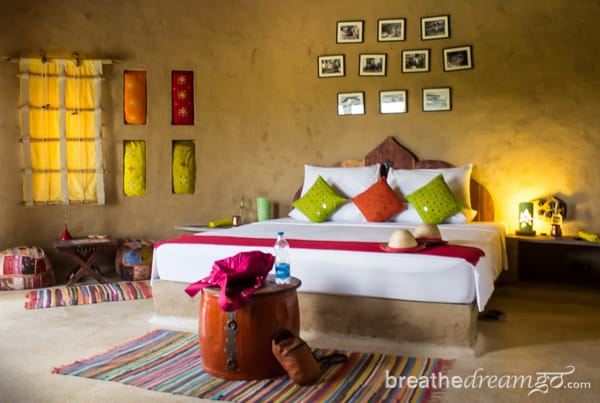
It’s a very hot day, and the first thing I do is immerse into my plunge pool. Recently ploughed nearby fields have released flying insects into the air and I scoop out several handfuls of them from the pool. Luckily, they diminish by the next day — but they are a reminder that I am truly in the countryside and not a fake, antiseptic environment, so I don’t mind.
Then I get down to the serious business of exploring Lakshman Sagar. Over the course of my three days there, I enjoy the natural beauty and deep serenity, the gourmet food and a couple of very special experiences. For, Lakshman Sagar is as much about the experience of being there as it is about the scenic surroundings, tasteful decor, luxurious touches and fine food.
India has some of the most spectacular hotels in the world. Read my guide to the Best hotels in India and how to book them for inspiration and ideas.
These are the top five highlights of my visit to Lakshman Sagar.
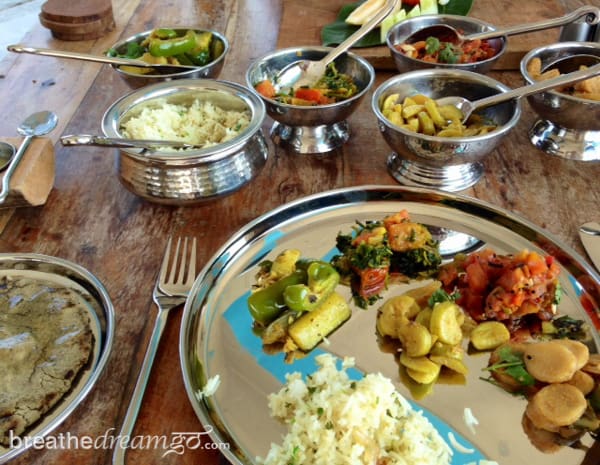
1. Enjoying gourmet food in a rustic setting
The simplicity of the lovely open-air dining room, facing the lake, belies the quality and delicacy of the food and service. Each night, I was treated to a feast of small courses, gourmet-quality dishes inspired by the local produce and cuisine and featuring seasonal specialties like bindi, brinjal and sweet potatoes. All of the herbs and vegetables, and some of the spices and fruits, are grown on the 32-acre property, and a nearby farm supplies fresh dairy products. The goal is to be completely self-sufficient one day.
Chef Gajendra uses less oil and salt then in traditional Indian food, and makes a custom blend of spices, garam masala, for use in the various dishes. He operates with a “no menu” concept, creating meals inspired by whatever is local and fresh.
One night, as I sat down to eat at a table facing the lake, a three-piece band played traditional Rajasthani folk music as a silvery crescent moon appeared against the very black sky. With no light pollution, Lakshman Sagar is a great place to watch the stars and experience Rajasthani style romance.
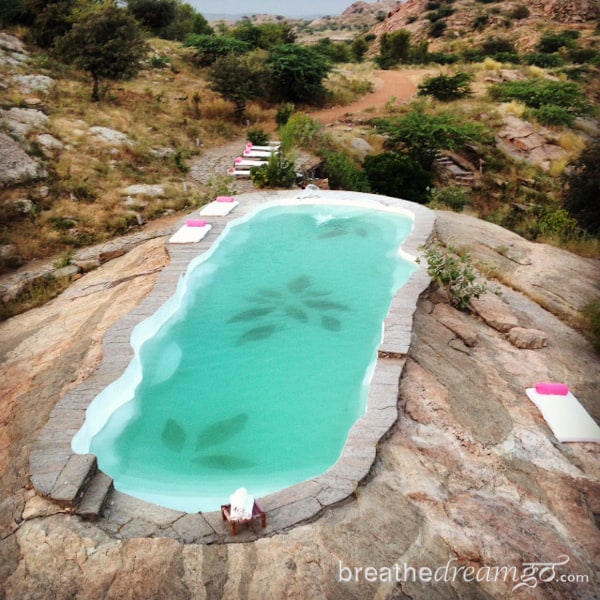
2. Playing in the zenana
Though only about three years old, Lakshman Sagar has already built up it’s own store of traditions and customs. One of them is to have tea served to guests on the roof-top terrace of the zenana at twilight — the best place to watch the sun set on the flat, desert horizon. I never missed this charming custom, though truth be told, a chilled gin-and tonic stood in for the tea on at least one evening.
Within the zenana, many treasures can be found, from a private dining room to a reading nook complete with an intriguing selection of books. Hand carved from the flat rock outside the zenana’s doors is the swimming pool, filled with naturally cool water, and elegant in its simplicity and brevity of purpose.
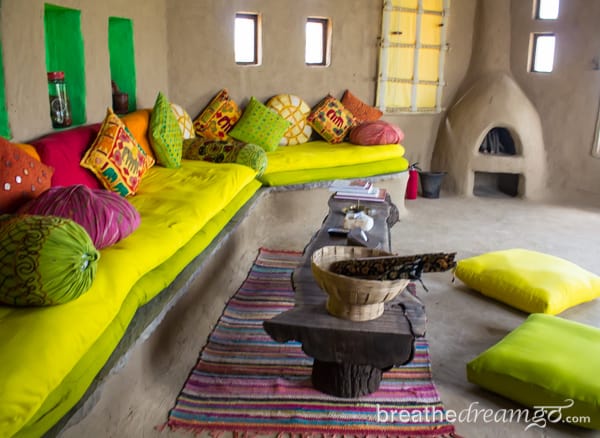
3. The luxury of my own villa
The villas at Lakshman Sagar are artfully designed and decorated with many charming touches inspired by the local culture. Textile colours pop against the dun-coloured walls, and authentic materials and touches add to the atmosphere. They are also very spacious, at about 900 square feet, and privacy is almost assured. Each villa is similar, but with a different orientation to the landscape.
For me, this is the epitome of luxury. Comfort without stiffness, authentic without artifice, and natural without rustic, staying at Lakshman Sagar can only be described as bucolic.
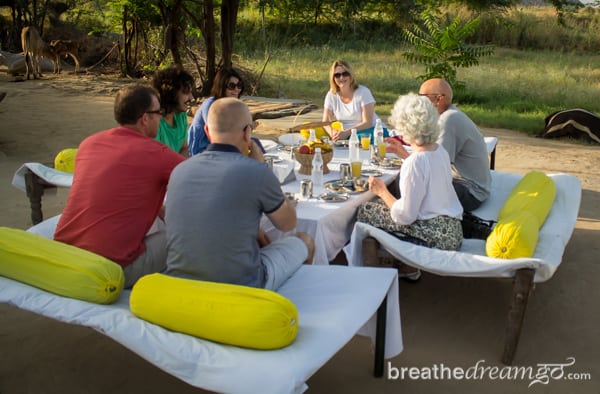
4. Eating fresh and simple food at field breakfast
On my second morning at Lakshman Sagar, I was escorted through the fields along with about six other guests to a simple farm building where a table was set up surrounded by charpoys (string beds). Two woman were grinding millet and making rotis, a boy scooped up a lamb from a flock of sheep, and the morning sun slanted through the grasses and trees creating a scene of pastoral bliss.
We sat down to a simple, delicious, filling and authentic breakfast of fresh fruit, millet rotis, freshly churned buttermilk and farm-fresh eggs. It was an enchanting experience and to Lakshman’s Sagar credit, they didn’t tart it up with gourmet food or high-end crockery. Aside from starched white table clothes and colourful bolsters, it was a very authentic breakfast of foods from the field, served in the field.
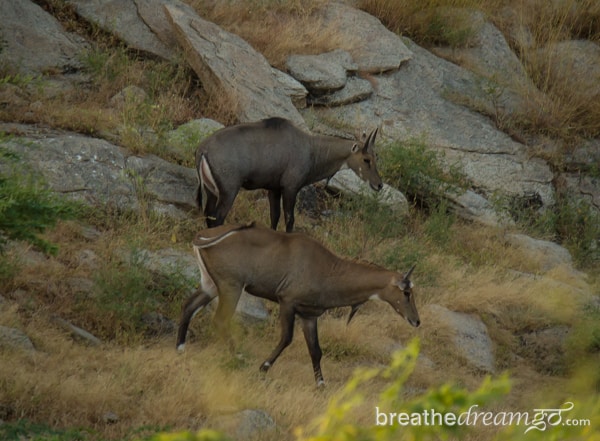
5. Walking the nature trail at sunset
Lakshman Sagar offers numerous experiences, such as village walks and desert safaris. I opted to do a nature walk. Just before sunset I set out with a guide, who was equipped with walking sticks, binoculars and water, for a walk through the countryside and around the lake. It was a bit early in the season for bird-watching. By November, the migratory birds start arriving, and bird watchers can see cormorants, white egrets, geese, ducks, parrots, doves, kingfishers and many more flock to the lake.
As we walked, we saw a herd of nilgai and some of the hundreds of peacocks that live on the Lakshman Sagar grounds, and are fed each evening by Ghopsingh, one of the security guards. Then the sun began to set, a few of the peacocks screeched, the fiery ball lit up the golden hues of the desert and I experienced once of those sublime moments that Lakshman Sagar took such care to create and that we travellers live for.
NOTE: I was a guest of Lakshman Sagar. All opinions and observations remain my own.
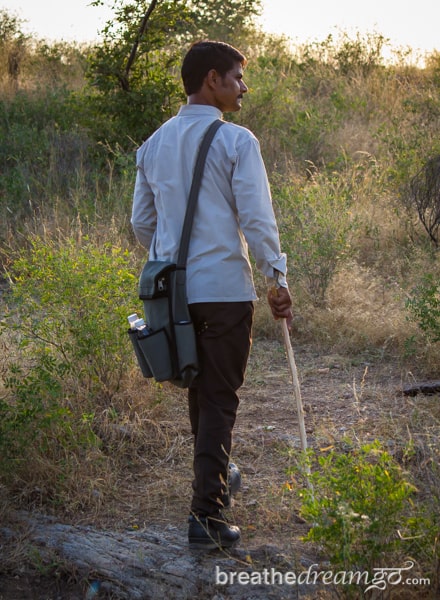
More reading about Rajasthan on Breathedreamgo
If you enjoyed this post, you can….
Sign up to The Travel Newsletter in the sidebar and follow Breathedreamgo on all social media platforms including Instagram, TripAdvisor, Facebook, Pinterest, and Twitter. Thank you!


